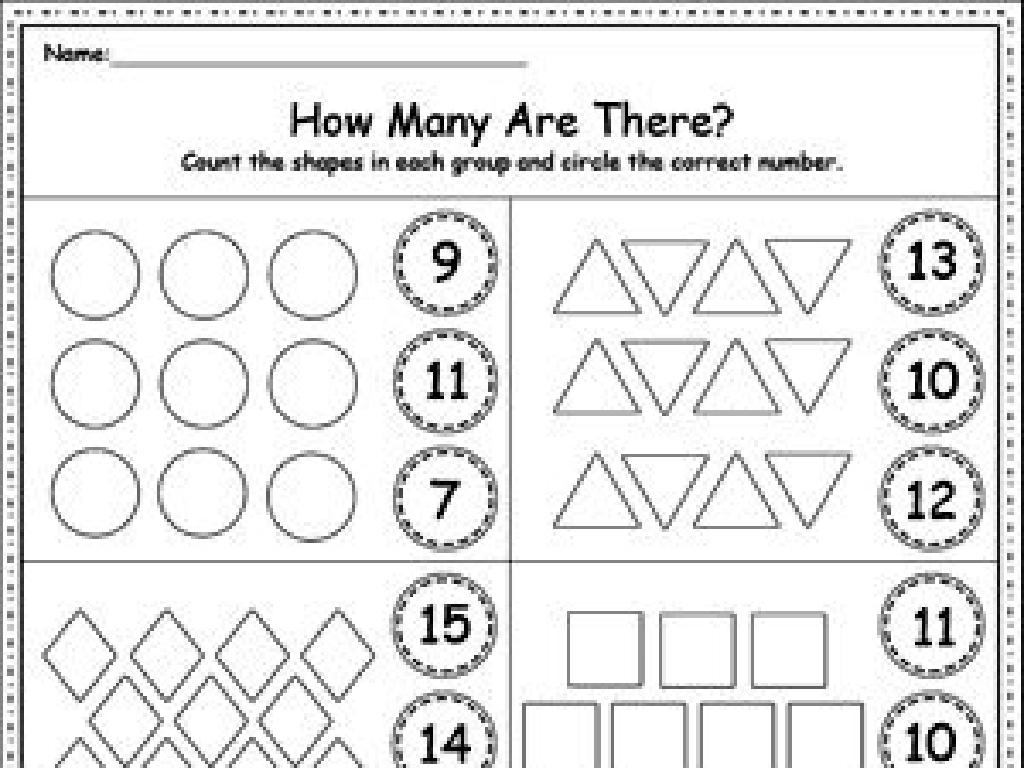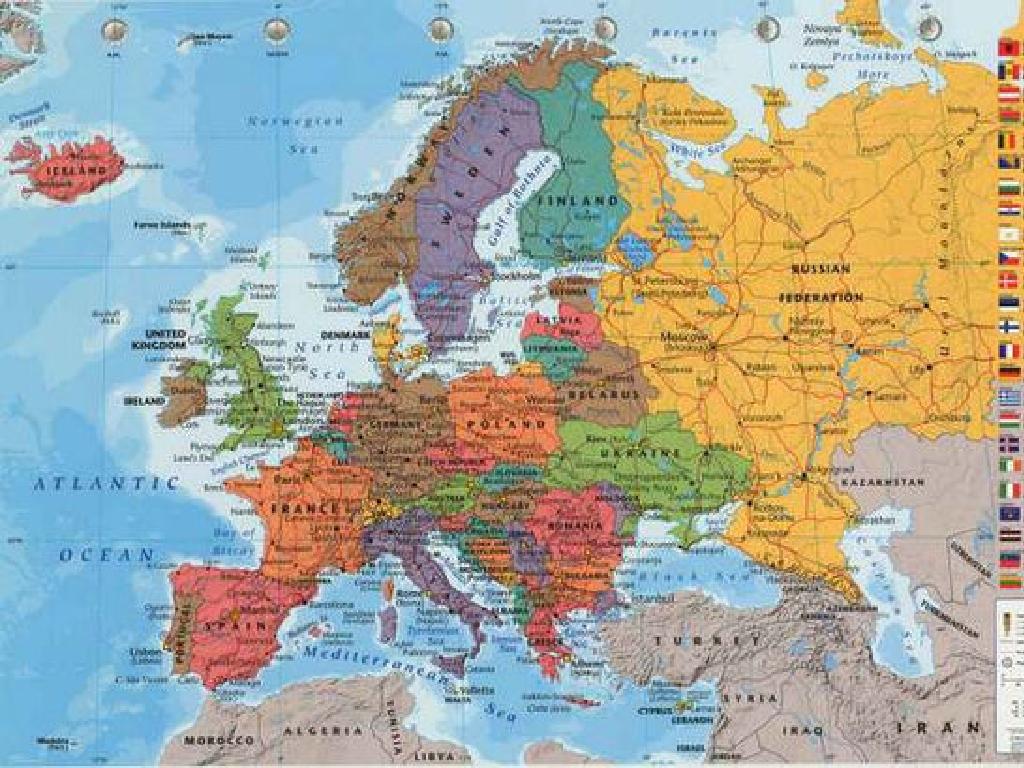Put A Mix Of Decimals, Fractions, And Mixed Numbers In Order
Subject: Math
Grade: Fifth grade
Topic: Compare Decimals And Fractions
Please LOG IN to download the presentation. Access is available to registered users only.
View More Content
Ordering Decimals, Fractions, and Mixed Numbers
– Understanding numerical values
– Grasp the concept of place value and size
– Comparing different number forms
– Learn to convert between decimals, fractions, and mixed numbers for comparison
– Everyday use of mixed numbers
– Examples: money, measurements, and recipes
– Practice ordering exercises
|
This slide introduces students to the concept of ordering different forms of numbers: decimals, fractions, and mixed numbers. Start by explaining the value of numbers and place value, which is crucial for understanding how to compare and order them. Show how to convert between decimals, fractions, and mixed numbers to compare them effectively. Provide real-life examples where these skills are used, such as in dealing with money (cents and dollars), measuring ingredients for a recipe, or measuring lengths. Conclude with practice exercises where students will apply what they’ve learned by ordering a set of mixed numbers. This will help solidify their understanding and prepare them for more complex math concepts.
Understanding Decimals
– Decimals as part of a whole
– Just like fractions, decimals show amounts less than one whole.
– Decimal place values
– Places after the decimal point have names: tenths, hundredths, thousandths.
– Reading decimals
– Example: 0.5 is ‘five tenths’, 0.75 is ‘seventy-five hundredths’.
– Comparing decimals
– Put 0.3, 0.08, and 0.56 in order by size. Which is smallest?
|
This slide introduces the concept of decimals to fifth graders, explaining that they are another way to represent parts of a whole, similar to fractions. Emphasize the place value system for decimals, with each place to the right of the decimal point representing tenths, hundredths, thousandths, and so on. Use examples to show how to read decimals aloud, reinforcing the place value names. Finally, engage students with a simple comparison exercise to arrange decimals in order, which will help them understand the size of different decimal values. Encourage students to think of money as a real-life example, where dollars are whole numbers and cents are decimal fractions of a dollar.
Understanding Fractions
– Fractions represent parts of a whole
– Numerator and Denominator explained
– Top number (numerator) over bottom number (denominator)
– Examples: 1/2, 3/4, 2/5
– 1/2 means 1 out of 2 parts, 3/4 means 3 out of 4 parts
– Comparing fractions to put in order
– Use common denominators or convert to decimals to compare
|
This slide introduces the concept of fractions to fifth-grade students, explaining that fractions are a way to represent parts of a whole. The numerator, the top number, indicates how many parts we have, while the denominator, the bottom number, shows into how many parts the whole is divided. Provide examples like 1/2, 3/4, and 2/5 to illustrate simple fractions. Emphasize the importance of understanding both parts of a fraction to compare them effectively. To put fractions in order, students can find common denominators or convert fractions to decimals. This foundational knowledge will be crucial for understanding how to compare and order different types of numbers, including mixed numbers and decimals.
Understanding Mixed Numbers
– Mixed numbers: whole + fraction
– A combination of a whole number and a fraction part
– Format: whole number + fraction
– Written with the whole number first, then the fraction
– Example: 1 1/2, 3 3/4, 2 2/5
– 1 1/2 means 1 whole and half more, 3 3/4 means 3 whole and three-fourths more
|
This slide introduces mixed numbers to the students, explaining that they consist of a whole number and a fraction combined. It’s important to emphasize the format, showing that the whole number comes first, followed by the fraction. Use examples like 1 1/2, 3 3/4, and 2 2/5 to illustrate the concept. Encourage students to think of mixed numbers as a way to represent numbers that are larger than a whole but not quite two wholes, or three, and so on. Have them practice by identifying and writing mixed numbers from visual representations, such as pie charts or number lines, to reinforce the concept.
Comparing Decimals, Fractions, and Mixed Numbers
– Grasp larger vs. smaller numbers
– Use number lines for comparison
– Visual aid to understand number positions
– Convert decimals to fractions
– Change decimals like 0.75 to fractions like 3/4
– Compare using common forms
– Easier to compare when all numbers are in the same form
|
This slide aims to help students understand the relative sizes of different numbers, whether they are decimals, fractions, or mixed numbers. Begin by explaining how to determine which numbers are larger or smaller using basic comparison rules. Introduce number lines as a tool to visually compare numbers, which can be particularly helpful for visual learners. Teach students how to convert decimals to fractions, ensuring they understand the concept of equivalent values. This will allow them to compare numbers more easily by converting them to a common form. During the lesson, provide examples and practice problems, and encourage students to explain their reasoning for their comparisons.
Converting Fractions to Decimals
– Divide numerator by denominator
– Use long division for large numbers
– Example: Convert 3/4 to a decimal
– 3 divided by 4 equals 0.75
– Practice with different fractions
– Try converting 1/2, 5/8, and 2/5
|
This slide introduces the concept of converting fractions to decimals, which is a foundational skill for comparing different types of numbers. Start by explaining that the numerator (top number) can be divided by the denominator (bottom number) to find the decimal equivalent. For larger numbers, demonstrate how to set up and solve using long division. Use 3/4 as a clear example, showing the division process step by step. Encourage students to practice with a variety of fractions to become comfortable with the conversion process. Provide additional examples and practice problems for students to work on, such as 1/2, 5/8, and 2/5, and discuss the answers as a class.
Ordering Mixed Numbers, Fractions, and Decimals
– Place numbers on a number line
– Visualize the position of numbers relative to each other
– Convert numbers to a common format
– Choose to convert all to decimals or all to fractions for uniformity
– Arrange numbers smallest to largest
– Organize the converted numbers in ascending order
– Practice with examples
– Use sample sets to apply these steps
|
This slide introduces the concept of ordering a mix of numbers. Start by explaining the importance of a number line and how it helps to visualize the relative positions of numbers. Demonstrate how to convert fractions to decimals or vice versa, ensuring that students understand both processes. Emphasize the need for a common format to compare numbers accurately. Once converted, guide students through the process of arranging numbers from the smallest to the largest. Provide practice examples and encourage students to work through them, using the number line as a tool for checking their work. This will help solidify their understanding of the concept.
Let’s Practice Ordering Numbers!
– Example 1: 0.3, 1/4, 2 1/2
– Which is smallest and largest?
– Example 2: 0.75, 3/8, 1 1/4
– Which is smallest and largest?
– Convert to similar forms
– Change fractions to decimals or vice versa
– Arrange in ascending order
– Use number line to visualize
|
This slide is a class activity designed to help students practice putting a mix of decimals, fractions, and mixed numbers in order. Start by converting all numbers to the same form, either all decimals or all fractions, to make comparison easier. For example, convert 1/4 to 0.25 and 2 1/2 to 2.5. Then, guide students to arrange the numbers from smallest to largest. Use a number line on the board to help students visualize the positions of the numbers. Encourage students to work through these examples in pairs or small groups, and then discuss the steps they took to solve the problems. This will reinforce their understanding of the concepts and provide an opportunity for peer learning.
Class Activity: Number Line Challenge
– Create a mixed number line
– Pair up and order numbers
– Work together to place decimals, fractions, and mixed numbers correctly
– Discuss ordering strategies
– How did you decide which number goes where? Consider size and value
– Present your number line
|
This activity is designed to help students understand the relative values of decimals, fractions, and mixed numbers by placing them on a number line. Students will work in pairs to encourage collaboration and discussion, which will help them to articulate their thought process and reasoning. As they share their number lines with the class, they will practice their presentation skills and learn from others’ strategies. For the teacher: Prepare a list of mixed numbers, decimals, and fractions for each pair. Monitor the pairs to ensure they are on task and understanding the concepts. Be ready to guide them if they struggle with ordering. After the activity, lead a discussion on different strategies used to determine the order of numbers.
Conclusion & Homework: Mastering Number Order
– Recap: comparing numbers
– Review how to put decimals, fractions, and mixed numbers in order
– Homework: ordering worksheet
– Complete a worksheet with 10 problems on ordering numbers
– Mini-quiz preparation
– Get ready for a mini-quiz next class on these concepts
– Practice makes perfect
|
As we wrap up today’s lesson, let’s review the strategies for comparing and ordering different types of numbers. Remember to look at the whole numbers first, then compare fractional parts by converting to like forms if necessary. For homework, students will reinforce their understanding with a worksheet that challenges them to order sets of decimals, fractions, and mixed numbers. Encourage them to use the methods we’ve learned in class. Also, let them know that we will have a mini-quiz next class to check on their progress. It’s important to practice these skills to gain confidence and proficiency.





